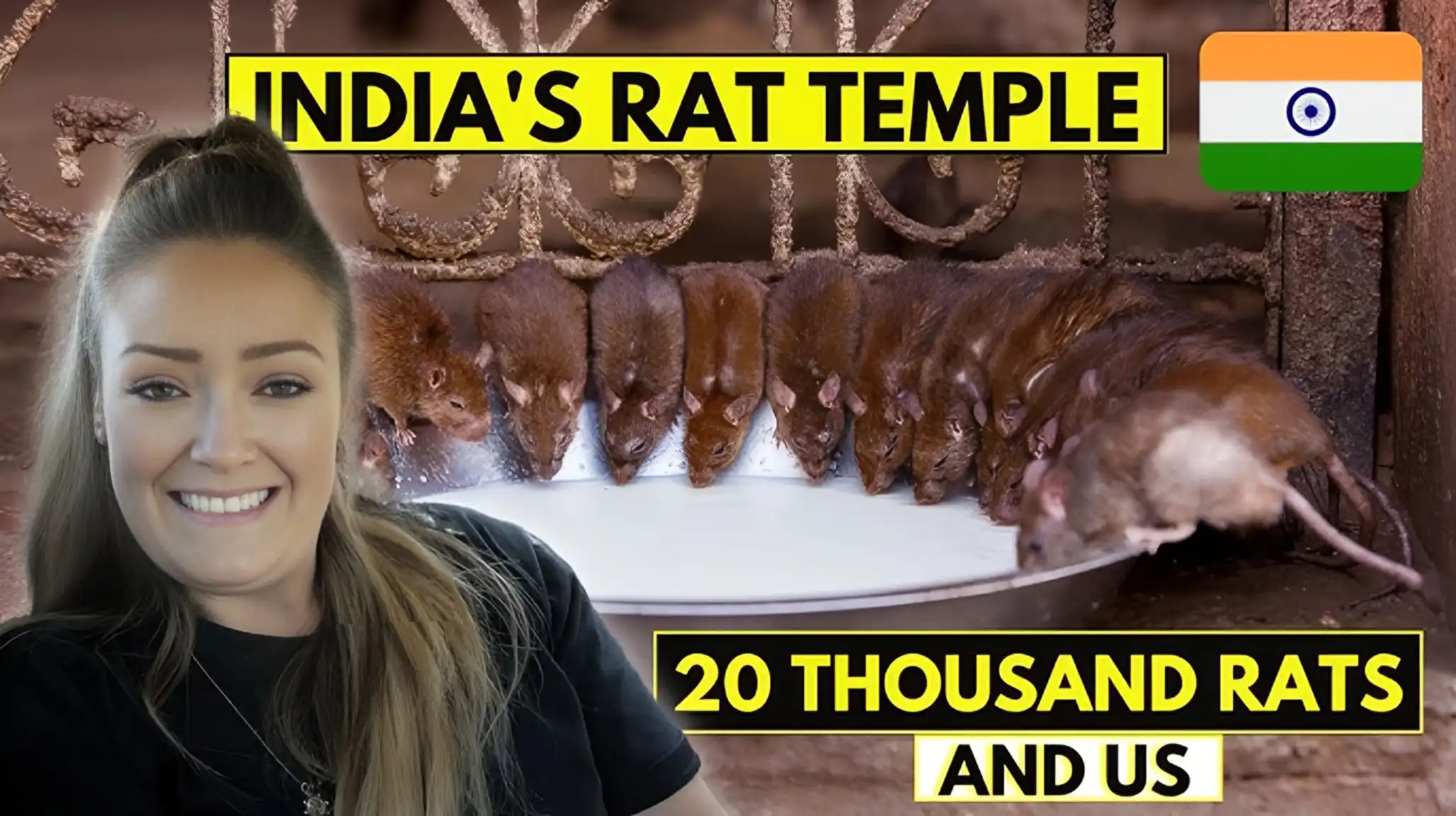The Temple of Rats in India
In the deserts of Rajasthan, India, lies one of the world’s most unusual and fascinating temples—not dedicated to a god of thunder or war, but to rats. Yes, you read that right. The Karni Mata Temple, located in the small town of Deshnok, is home to more than 25,000 revered rats, known as kabbas. These rats are not merely tolerated or protected—they are worshipped.
This unique temple draws not only thousands of Hindu devotees but also curious travellers from around the globe. With its blend of mysticism, devotion, and deep-rooted legend, the Karni Mata Temple is a profound example. It shows how spirituality in India can take the most unexpected forms.
Video Credits To: https://www.youtube.com/@sashidemedia
The Legend of Karni Mata
To understand the significance of the temple, we first need to look at the legend that surrounds Karni Mata, the deity to whom the temple is dedicated. Karni Mata was a 14th-century female mystic and sage. She is considered to be an incarnation of the Hindu goddess Durga, the fierce protector of righteousness. She was known for her miracles and for guiding her people with wisdom and compassion.
According to local lore, one of Karni Mata’s stepsons drowned in a pond while attempting to drink from it. Devastated, she pleaded with Yama, the god of death, to bring him back to life. At first, Yama refused. But after persistent efforts by Karni Mata, he relented and granted her a unique boon. From that moment on, all her male descendants would be reincarnated as rats before being reborn as humans.
Because of this divine pact, the rats in Karni Mata Temple are believed to be reincarnated souls of her devotees and family members. They are not seen as vermin, but as sacred beings on a spiritual journey.
The Temple’s Architecture and Ambience
The Karni Mata Temple, built in the early 20th century by Maharaja Ganga Singh of Bikaner, is constructed with ornate white marble. It features intricately carved doors and domes. The inner sanctum houses the idol of Karni Mata, dressed in royal robes with a silver crown.
But what truly defines the temple isn’t its marble elegance—it’s the thousands of rats freely roaming the premises.
The rats dart around the temple, climb over railings, feast from large metal bowls of milk and grain offered by devotees, and even scurry across people’s feet. Strangely, the temple doesn’t smell foul, and the rats appear surprisingly healthy. Many visitors describe a sense of peace rather than disgust. This speaks volumes about the sanctity of the space.
The Holy Rats (Kabbas)
The rats here are treated like royalty. Devotees offer them milk, sweets, grains, and coconuts, believing that feeding the kabbas brings blessings. These offerings are later considered prasad—holy food—and are often shared among devotees. Even if the rats have nibbled on it. For those unaccustomed to the practice, this might seem unsanitary or even alarming. But to believers, it’s a sacred communion.
Interestingly, there are a few white rats in the temple, and spotting one is believed to bring good luck and divine blessings. These rare white rats are considered manifestations of Karni Mata and her family members themselves.
Despite the sheer number of rodents, the temple is immaculate. Staff and volunteers clean the floors constantly, and the rats are well-fed, so they rarely venture beyond the temple’s walls.
Rituals and Festivals
Daily rituals are performed at the temple, including aarti (a ritual offering of light) and the serving of prasad to both rats and devotees. The temple comes alive during Navratri, a major Hindu festival. It honours the divine feminine. During this time, thousands of pilgrims flock to Deshnok to pay homage to Karni Mata, and special ceremonies are held for the rats.
The temple is open to people of all religions and backgrounds, and it has become a significant cultural and tourist attraction in Rajasthan.
Spiritual Symbolism and Philosophical Significance
To an outsider, worshipping rats might appear bizarre or unhygienic, but in the Indian spiritual tradition, all life forms are considered sacred. This belief, rooted in Hindu philosophy, sees God in every creature—human or animal, large or small. The Karni Mata Temple is a living testament to this inclusive view of life.
The rats here are not just animals—they are part of a spiritual ecosystem that links life, death, and rebirth. This temple also offers a subtle commentary on the idea of karma and the cycles of existence that underpin Hindu cosmology.
A Tourist Experience Unlike Any Other
For many foreign tourists, visiting the Karni Mata Temple is one of the most surreal and unforgettable experiences of their journey through India. Walking barefoot through a temple floor shared by thousands of rats may not appeal to everyone. Still, those who embrace the experience often come away with a deeper understanding. They gain insights into Indian spirituality and the diverse ways in which the sacred manifests.
Travellers are advised to be respectful, remove their shoes (as is customary in Hindu temples), and not to harm any rats. Accidentally stepping on and killing a rat is considered a grave offence. The penance typically involves offering a silver rat as atonement.
A Living Wonder of Faith
In an age of modernisation and science, the Karni Mata Temple stands as a defiant monument to faith, tradition, and the enduring power of legend. It challenges perceptions of the sacred and the profane. It pushes visitors to question what devotion looks like in different parts of the world.
Whether you see it as a spiritual site, a cultural oddity, or a living myth, the Temple of Rats in Deshnok is a reminder that faith takes many forms—some of them running on four tiny feet.













